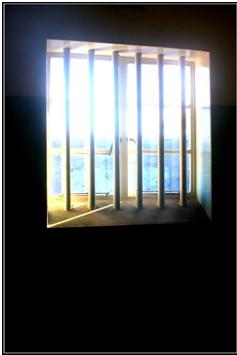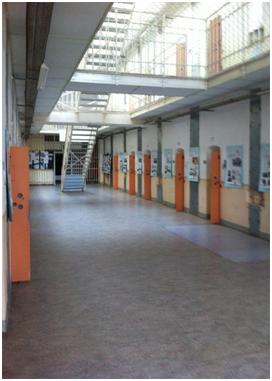 America is known as the land of the free. And yet despite making up less than 5 percent of the world’s population, our nation has over 25% of the world prison population. 2.4 million Americans are behind bars. A 2008 study found that one out of every 48 adult working-age men is imprisoned, and since then the statistics have continued to rise steadily.
America is known as the land of the free. And yet despite making up less than 5 percent of the world’s population, our nation has over 25% of the world prison population. 2.4 million Americans are behind bars. A 2008 study found that one out of every 48 adult working-age men is imprisoned, and since then the statistics have continued to rise steadily.
It wasn’t always this way. At the beginning of the 70s, the average state’s incarceration rate was around 200 per 100,000 individuals. By now, it’s already risen to 700 per 100,000. That’s well over a tripling in less than 45 years.
The reason behind the drastic leap in incarceration rates is not due to a sudden boom in dangerous crime. In fact, since 1993, violent crime in the US has dropped by a half. So why the sudden rise in jailbirds?
The reason can be traced back to the War on Drugs. When President Nixon instituted the strict crackdown, his intention was to reduce drug usage in the US. What his administration did not foresee was the most War on Drug’s most insidious effect – the drastic rise in the prison population.
Evidence supporting this hypothesis is indisputable. Today, nonviolent offenders make up over 60% of the prison and jail population. One out of every four inmates is serving time for a nonviolent drug offense. This is up from less than 10% in the 1970s.
Part of the reason why the US has such a high prison population is because since the institution of the new judicial policies in accordance with the War on Drugs, many relatively minor crimes have been revised to include much longer prison sentences, often with unyielding high minimum sentences without any flexibility for judicial consideration of extenuating circumstances on a case by case basis. In some extreme cases, laws instituted post-1971 have established life sentences for even certain nonviolent crimes.
Cesare Beccaria, the great European philosopher, wrote in his book Crime and Punishment, “For a punishment to be just, it should consist of only such gradations of intensity as suffice to deter men from committing crimes. Revisions in recent years have made sentences for offenses such as drug usage and other nonviolent crimes unnecessarily long, almost to an intolerable extent. When sentences are too harsh for the crime, they can have much more adverse effects on inmates than when the sentence is reasonable and offers the opportunity for a new beginning. Once they are released after long periods of incarceration, their physical state, family lives, economic situations, and psychological stability are all highly disrupted and in a state of deterioration. These are not the only victims of an unjust justice system; indirectly, children, families, and entire communities all suffer, which the most tragic result of all. One of the main purposes of incarceration is to protect the general populace from dangerous criminals who pose a serious threat to society, which is why imprisoning violent offenders should theoretically be much more common than nonviolent ones. The irony is that with today’s draconian policies regarding non-violent crimes, the poorly executed attempt to improve society only ends up hurting countless people in the end.
 But perhaps the most significant reason for why mass incarceration is such a catastrophe is because it compromises the ideals of democracy that have guided the United States since its founding. Today, the US is, by far, the single democracy with the highest rates of incarceration. As a global leader in today’s modern world, the US sets a poor example for rising democracies and fellow nations.
But perhaps the most significant reason for why mass incarceration is such a catastrophe is because it compromises the ideals of democracy that have guided the United States since its founding. Today, the US is, by far, the single democracy with the highest rates of incarceration. As a global leader in today’s modern world, the US sets a poor example for rising democracies and fellow nations.
The outlook of our judicial and prison system is undoubtedly bleak, but progress over time is not impossible. After all, the massive rise of mass incarceration happened in less than half a century. With increased awareness and activism, we can stop and even reverse this trend. We can create change in the years to come – and this time, it’ll be for the better.
Author: Iris Wang
Images: Public


